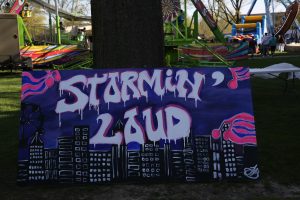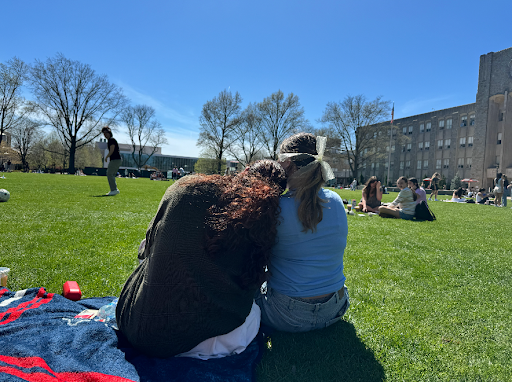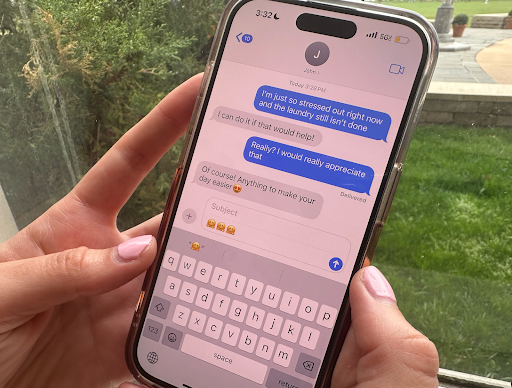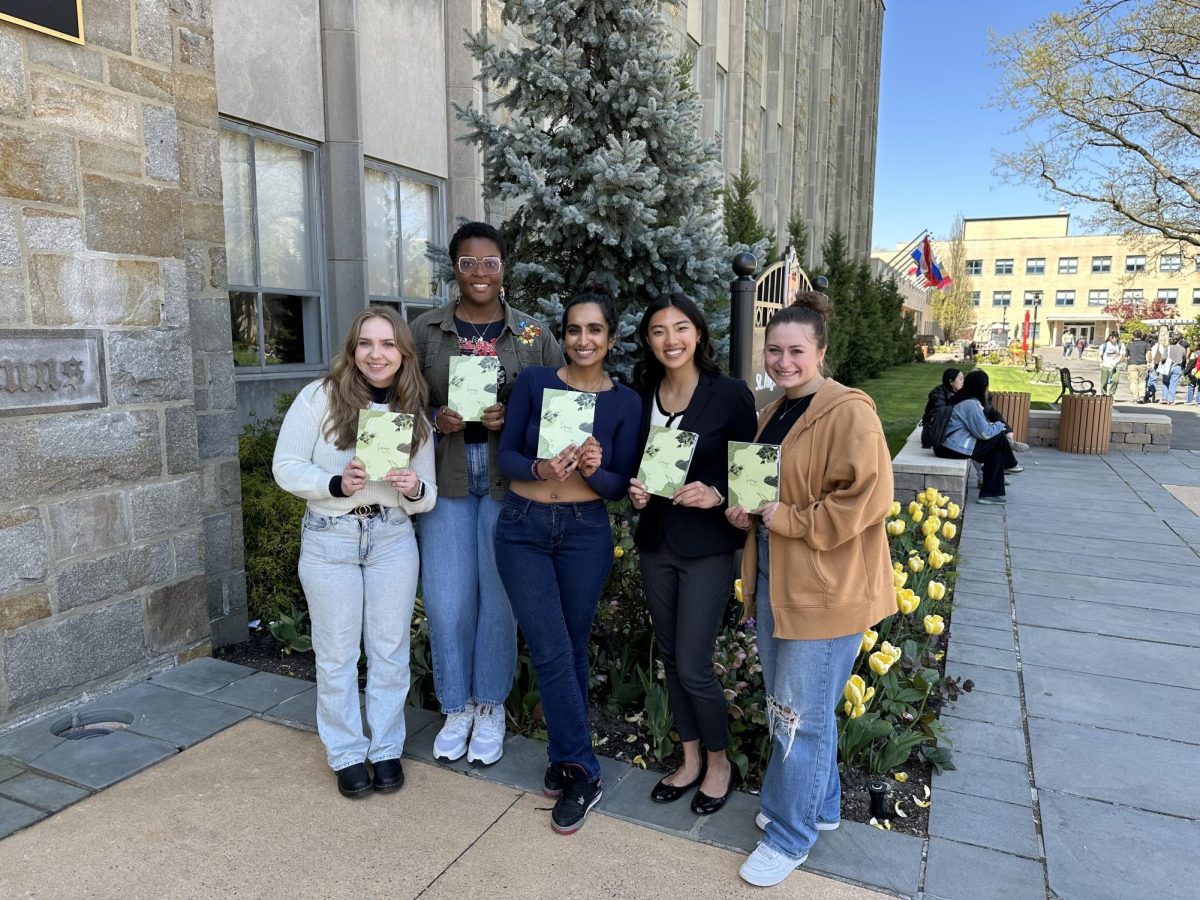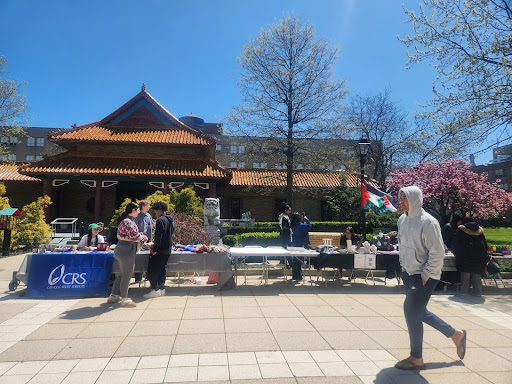Dennis Whitford stands next to the 18- inch square of fabric commemorating his brother, Mark. “He was a first responder,” he explains, an FDNY firefighter that died five years ago in the World Trade Center attacks. “There was a lot of confusion [when it happened],” he adds, “not knowing; a lot of unknown answers.”
Is it difficult for Whitford to look back on that day? “Absolutely,” he immediately answers. “Especially coming on the fifth year. It’s I think just a little bit tougher right now, because it’s five years without talking to my brother or seeing him.” But he also remembers one thing which gives him hope. “It’s amazing how America came out and supported everybody.”
The quilt that Whitford is standing next to is the 9/11 Victims Memorial Quilt, a quintessential example of that support. Every person who died in the terrorist attacks of Sept. 11, 2001 is memorialized with a square like that of Mark Whitford. On the weekend of Sept. 8-11 it was brought for the first time ever to New York City, where it was displayed in the Student Center Gymnasium of St. John’s University’s Staten Island Campus.
The gymnasium was filled Saturday, with friends and family members of those who perished, looking for the squares commemorating their loved ones. Adorned with photographs, quotes of poetry and scripture, and affectionate nicknames of those that were lost, the quilt was created by more then 3,600 volunteers from every state and 17 foreign countries. Many of the squares are colored red white and blue or show patriotic symbols, while others have signs or national heritage, favorite pastimes or religious symbols.
Dominick DeRubbio, a student at John Jay College, came to see the square created for his uncle, a firefighter.
“It’s great that they brought it here,” DeRubbio said. “And to see the other people that were affected by it, to see their reactions, it’s really moving.”
The idea for the quilt came from Corey Gammel, a resident of Long Beach, Calif.
“I woke up and couldn’t believe what I was seeing,” Gammel said. “Something was calling me to New York City. I wanted it to become more of a reality for me.”
Gammel said that when he got to New York, he was escorted into the Ground Zero site (“I was pushy,” he explains) and for the first time, the reality of what had happened hit him. He said that he felt compelled to do something as a tribute to the victims, and thought of a quilt he had heard of to support AIDS victims.
Gammel started the United in Memory organization to make his dream of a 9/11 victims quilt a reality. He said that once he had made the idea public, thousands of people around the world volunteered to help through the Internet. Each one was given a list of names of victims with short biographies of each person.
The project was completed shortly before the first anniversary of the attacks, and since then has been to 33 different sites on a national tour, mostly consisting of colleges and universities.
The quilt totals 16,000 square feet and, when laid side by side, stretches more than 1,500 feet long.
Largely responsible for the quilt coming to New York City for the first time was Dennis McKeon, who heads the tragedy outreach program Where to Turn.
Where to Turn began at St. Claire’s Parish in Staten Island, which lost 29 parishioners in the World Trade Center attacks.
“We started this little group,” McKeon said, “and it’s grown into an international support network.”
The group’s brochure bills it as “a gateway to relief and recovery for everyone seeking quick, easy access to compassionate care during times of trouble.” McKeon said that the organization uses its Web site to link victims of any tragedies to any resources that may be available to them.
When McKeon learned about the quilt, he decided that it had to be brought to the city.
“I called [Corey Gammel] earlier in the year,” McKeon said, “and I said ‘Is there any way we can get this here this year?'”
McKeon said that Gammel originally agreed to bring the quilt to Staten Island in July, and the University offered its space.
However, in April, McKeon received a phone call from Gammel.
“Corey called me up and said ‘Listen, we’re available to come Sept. 11 weekend, would you want us to come?'” McKeon said. “I called back St. John’s because they had already made all their plans for July, and they were great, they changed over the plans and everything and set it up.”
“They were looking for a site that was large enough to accommodate the grand extent of the quilt,” explained Sharon Lynch Norton, the Vice Provost of the Staten Island campus. “We had the space… so we were only too happy to make all of the arrangements”
Aside from the viewings on Saturday and Sunday, which were open to the public, the University held a VIP reception that was open only to the victims’ family members, and which was atteneded by Sen. Hillary Clinton, among other city and state political leaders.
Norton added that the talks between United in Memory and the University were largely handled by Theresa Cantarella, a member of the St. Claire’s parish who works in the St. John’s Financial Aid office, and the University’s Vice President of Community relations, Joseph Sciame.
Sciame said that Staten Island was a good place to display the quilt because it was hit particularly hard by the terrorist attacks. “When 9/11 happened there were more memorial services here on the island than perhaps anywhere,” he said. “The people really came together and worked collectively” Sciame also spoke about the possibility of Staten Island eventually providing a place for the quilt to be displayed permanently. “One of the ideas is snug harbor,” he said. “There are some homes that could be upgraded, remodeled and renovated, and it’s possible that this exhibit would then have a permanent home.”
Another organization involved in the event is the Joseph Maffeo Foundation, named after a firefighter from “Red Hook” Ladder 101 in Brooklyn who died in the World Trade Center. The foundation was created three years by Maffeo’s sister, Linda Manfredi, and her husband, Keith Manfredi.
“Our main goal is to teach that hate bears severe consequences and make them understand that they have to move in a positive way toward making the world a better place,” Mrs. Manfredi said. “That’s our philosophy.”
Whitford, though clearly hurt by the memories brought back by the quilt, expressed his gratitude for those that helped his brother, and every other victim of Sept. 11, to be remembered. “To see what all these people did for this, to make these quilts, and how much work it took to do that,” he said, “I think that… besides [not forgetting] 9/11, we can’t forget the people that did this.”


